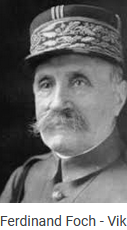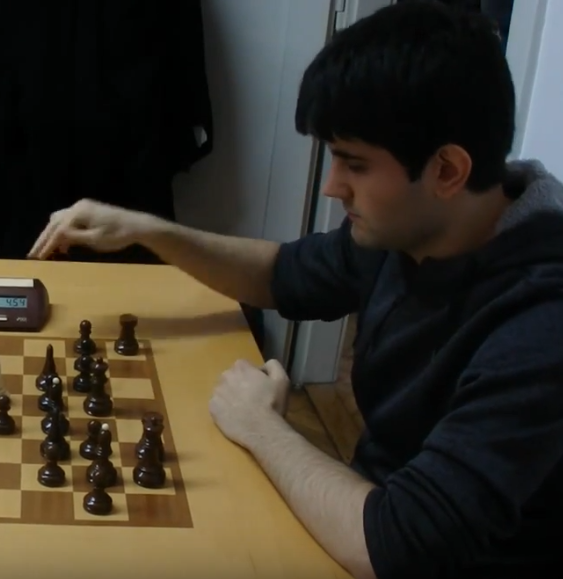No technical incident for this session, which is exceptional enough to be noted!
In addition to the regulars, we had the lightning visit of Abdel.
The Master, in full possession of his means, gave us a high quality lesson as you can see in the report below.
Master's word

"In May 1968, it was forbidden to forbid. In May 2018, it is forbidden to forbid to forbid" (A. Bercoff).
"An assembly, to decide, must have an odd number. But three is already too many" (Maréchal F. Foch).
"She loves you, believe me, I can see clearly -- give me the address of your eye doctor" (in a 1969 "James Bond" film).
Did you know that? I am also a red: extremely dangerous retiree. Thank you Bruce and others.
"The study of openings leads only to confusion, does not teach us to think [...] We study openings because they immediately give us the impression of mastering our subject. [...] Endgames are thankless, they take a long time, but when you start to understand, you are happy. The openings are great, you learn quickly, and when you think you're a great player... you realise that in fact you don't understand anything" (E. Pichouron in 2002).

Festina Lente in pawn endgame. This study is often misunderstood: it is, of course, about leaving pawn moves to the opponent (to avoid stalemate), but not only, otherwise 1 Kd2 would win. However, this fundamental try is not mentioned in the Encyclopaedia of Endgames ("chess informant"), neither in the 2013 edition nor in the 1982 edition. The editors have also, three decades later, continued to call "Udo" (sic) the author of my exercise 61, namely the problemist and populariser Jean Oudot, whom we spoke of in the previous lesson. One progress, however: the ascetic "Lasa" becomes "Tassilo von Heydebrand und der Lasa" (phew!). Another progress in the new edition: the adoption of bold type. Yes, even though these brilliant editors had already understood in 1982 that bold type was necessary for the main variants, they adopted it for Informant 34 and following, but not for the Encyclopaedias, waiting for that... 30 years. People are strange.
Rook domination. She struggles to win one of the three white figures and then, after succeeding, suddenly runs out of space. Equestrian feast: five promotions in Knight in a remarkably economical form. Obviously, the analysis engines were not available at the time of Libourkine, Korolkov and Chéron...
A festival of pretty bishop moves that almost became an artistic study. But uniqueness is an essential criterion, and one does not tolerate two winning suites, each as ingenious as the other. And even if one is less complex, preferable for a player, and therefore deserving of the title of "main line", they say. After all, as V. Halberstadt reminded us, "a composer of studies

must maintain contact with the practical game". At least one can enjoy this great wealth of unusual material.
Three draws as exercises for the next course: a simple one, another more acrobatic one, then an unexpected annihilation of the black Queen.
Two little tactical jokes. Played at the same tournament as the day's game, where incredibly your master-bidder was, ending up in the cabbage, of course, but reliving, notwithstanding 95% of the suffering, some delicious joys of yesteryear. Our hero is one of the rising players in the country of the untouchable Ivan Šarić, European champion and then national champion, who seemed to me to have more trouble in the second championship than in the first!

He is at the heart of an old controversy: is it right to lose, or rather to sacrifice, a bishop (g5-h4) against two pawns after ...h6 & ...g5, knowing that a g3 pawn prevents Bg3? Most of the time, in any case, Black refrains from ...g7-g5, which prompts the affirmative. He plays a Shirovian game, with the motto initiative at all costs. And if Black could play better and draw, a Black advantage is never shown, despite a flurry of extra pawns.
Half of the 2# in the Marjan selection are blockades: the key threatens nothing, but black damage is expected. No less than 6 variations in the first 3#, with 3 distinct units occupying the same square, both in the 2nd and 3rd move. Then an AB-BC-CD-DA cycle in the second, a Queen festival and some promotions.
Opening lines in the French 4#, nice mates in the Russian, permutation in the Italian. Interceptions in the first 2# helpmate, AB-BC-CA cycle in the second. The 6# helpmate has the curious characteristic of ridiculing the fritzoid problem-solving engine. Finally a selfmate of more than a century. Difficult? Not so much: you just have to find the mate table, after which everything flows naturally.
Have a good time. See you at the end of May or beginning of June. Deus vos custodiat.
Comments
1 Alain On Sunday, april 07, 2024
2 Alain On Sunday, december 20, 2020
3 Alain On Wednesday, august 19, 2020